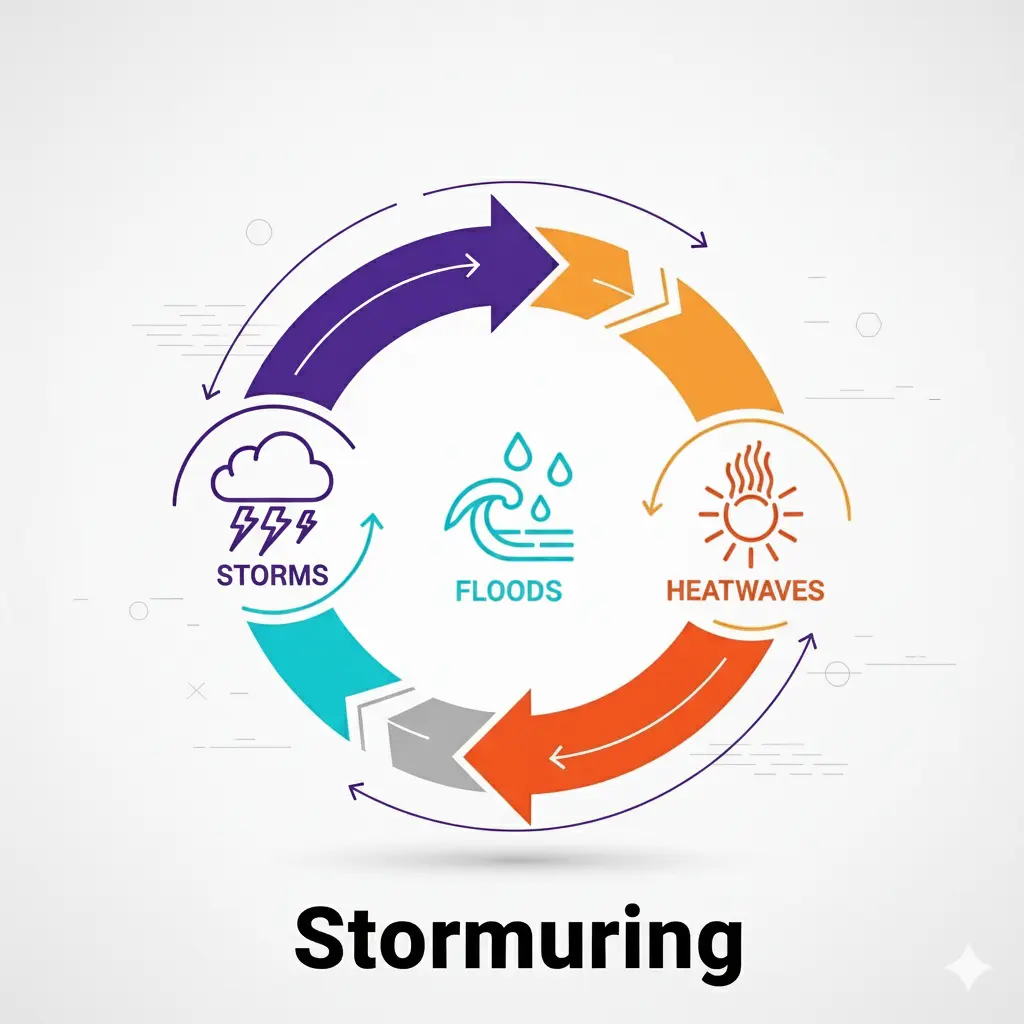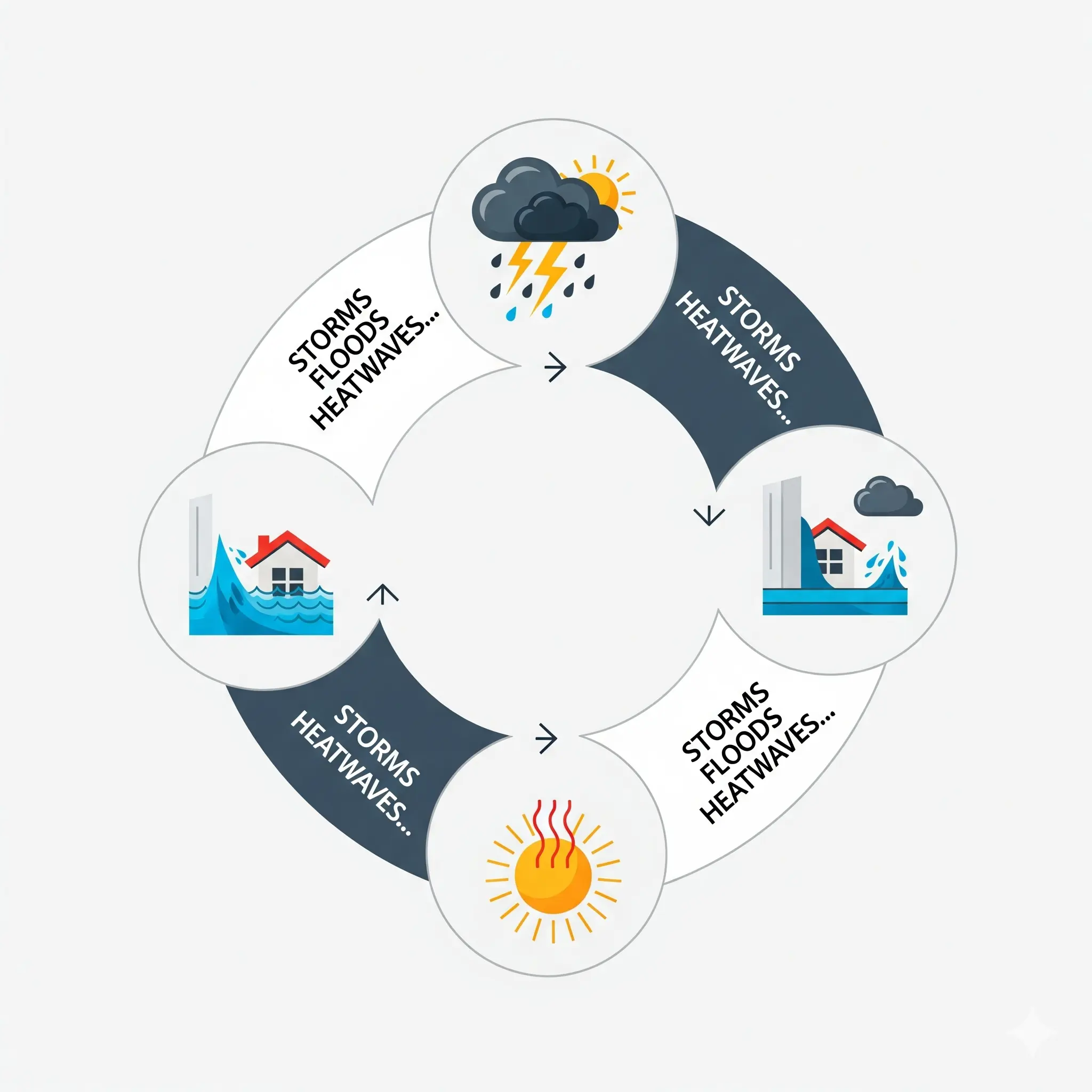
Stormuring is a term you may not have heard before, but it’s quickly becoming one of the most important ideas in climate science and disaster management. Have you ever felt like one storm ends, only for another to arrive before life returns to normal? That endless cycle is no coincidence—it’s storm in action.
Take New Orleans, USA, for example. The city was still repairing damage from Hurricane Katrina when new storms struck, flooding neighborhoods that hadn’t fully recovered. In Bangladesh, coastal villages often face monsoon floods and cyclones so close together that homes barely get rebuilt before the next wave of destruction arrives. These stories highlight what storm feels like on the ground—an exhausting rhythm of disaster and recovery.
What Is Stormuring?
Fundamentally, It is the overlapping of climate-induced disasters. Not a single hurricane or flood but how these phenomena occur one after another, thinning resources and slackening recovery.
The World Meteorological Organization (WMO) states that weather-related catastrophes have grown five times over in the past 50 years and that climate change is intensifying them and causing them to become more frequent. The ways in which communities get to experience that reality are called storm.
It is the term used to describe a series of extreme weather events such as storms, surges, floods, and heatwaves that overlap and recur, trapping communities.
The result? Cities, families, and even whole economies find themselves in a cycle of destruction and reconstruction with scarce air in between. And with the increase in climate change, it is no longer just a scientific term—it’s a lived reality for millions around the globe. Even technology designed to aid recovery, like data recovery tools or video converters for communication, shows how critical resilience and preparedness have become.
Why Stormuring Is Different from Regular Storms
Climate Change as the Driving Force
It doesn’t happen in isolation—it’s directly linked to climate change. As global temperatures rise, the atmosphere holds more moisture, fueling heavier rainfall and sudden flash floods.
A warming planet doesn’t just create single storms—it sets the stage for a continuous cycle of extreme weather, which is exactly what storm describes.
Interesting fact: The past decade has been the hottest ever recorded. With each 1°C rise in temperature, the atmosphere can hold about 7% more water vapor, intensifying storms worldwide.
The Layered Impacts of Stormuring
One of stormuring’s most damaging traits is its stacking effect. Unlike a single disaster that allows time to recover, storm layers events on top of each other.
This endless cycle drains resources, slows recovery, and leaves long-term scars. It’s not just about rebuilding homes—it’s about the toll on mental health, local businesses, and overall community stability.
Interesting fact: Studies show that 60% of small businesses never reopen after suffering back-to-back disasters—clear evidence of how it cripples economies.
How Stormuring Hits Cities Hardest
Urban areas are often the most vulnerable to storm. Cities filled with concrete and limited green space can’t absorb heavy rainfall, and outdated drainage systems quickly overflow.
Rapid, unplanned construction only makes things worse, blocking natural waterways and trapping floodwaters.
The economic impact is staggering. According to the World Bank, climate-driven storms already cost the global economy over $650 billion each year, with cities carrying the heaviest losses. From New York’s flooded subways to Mumbai’s paralyzed transport systems, cities are the frontlines of storm.
Interesting fact: In 2021, New York City’s subway system flooded three separate times in just two months—an everyday reminder of storm in a modern megacity.
The Human and Economic Costs of Stormuring
It isn’t only about property damage—it reshapes lives.
- Economic Strain → Homes, businesses, and infrastructure are destroyed, while insurance losses keep rising.
- Health Risks → Standing floodwaters increase waterborne diseases, and poor air quality worsens respiratory conditions.
- Environmental Stress → Coral reefs, forests, and wetlands—natural buffers against storms—are eroding faster than they can recover.
- Forced Migration → The UN projects over 200 million people could be displaced by 2050 due to climate-linked disasters.
Solutions That Work: Fighting Back Against Stormuring
While the challenge is big, communities aren’t powerless. Solutions are already being tested worldwide:
Smarter Infrastructure
Stronger buildings, upgraded power grids, and modern drainage systems can withstand repeated stress.
Community Preparedness
Early-warning systems, evacuation drills, and public awareness campaigns help people act faster and stay safer.
Nature-Based Defenses
Mangrove forests, reforestation projects, and green city planning reduce flooding and cool urban heat islands naturally.
Policy Shifts
Governments can enforce climate-smart building codes, invest in adaptation projects, and cooperate globally to fund resilience.
The Future of Stormuring: What Lies Ahead
Climate models suggest storm will only intensify, especially in coastal and urban regions. But the outlook isn’t all grim. By combining innovation, nature-based solutions, and strong policies, societies can adapt and reduce the damage.
The real question is: will we act quickly enough?
(FAQs)
Q1. What is stormuring in simple terms?
Ans: It is the cycle of repeated extreme weather events—like storms, floods, and heatwaves—that hit communities back-to-back. Unlike single disasters, it leaves little recovery time before the next event begins.
Q2. How it is linked to climate change?
Ans: Storm is fueled by global warming. Warmer oceans produce stronger hurricanes, and a wetter atmosphere leads to heavier rainfall. Rising global temperatures make these extreme events more frequent and intense.
Q3. Why are cities more vulnerable to it?
Ans: Urban areas suffer more because of poor drainage systems, rapid construction, and reduced green spaces. Concrete surfaces worsen flooding and trap heat, making cities especially vulnerable to repeated cycles.
Q4. What are the human impacts of storm?
Ans: It displaces families, destroys homes, increases poverty, and affects mental health. Communities often face higher risks of disease outbreaks and long-term economic losses.
Q5. How can we reduce the effects of storm?
Ans: Solutions include building stronger infrastructure, setting up early-warning systems, restoring natural defenses like mangroves, and enforcing climate-smart policies. Communities that prepare in advance recover faster and with less damage.
Q6. Will storm get worse in the future?
Ans: Yes, climate models suggest storm will intensify—especially in coastal and urban regions. However, proactive investments in resilience and sustainable planning can help reduce the risks.
Conclusion:
Stormuring may be relentless, but our response doesn’t have to be. With smarter planning, resilient infrastructure, and a commitment to sustainability, we can break free from the cycle of constant disaster and recovery.
According to the United Nations Office for Disaster Risk Reduction (UNDRR), proactive investment in resilience can save trillions in future losses by protecting communities before disasters strike.
Your Turn: Have you seen signs of stormuring in your community? Share your experience in the comments below—your insights could help others prepare.


Your commitment to authenticity sets beautiful example for others to follow